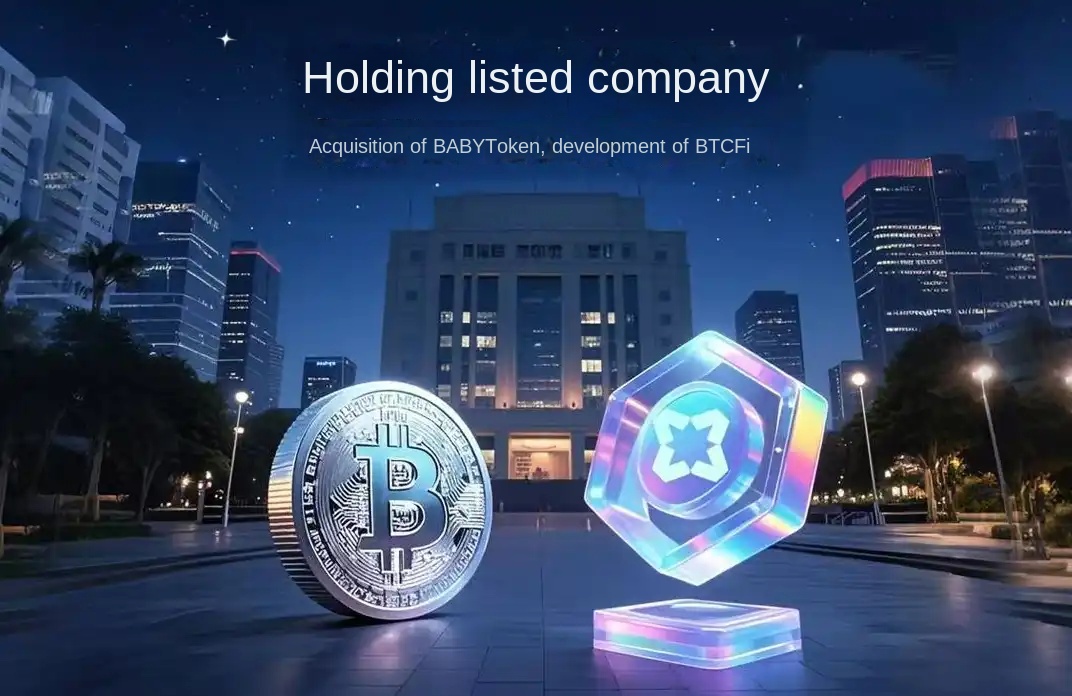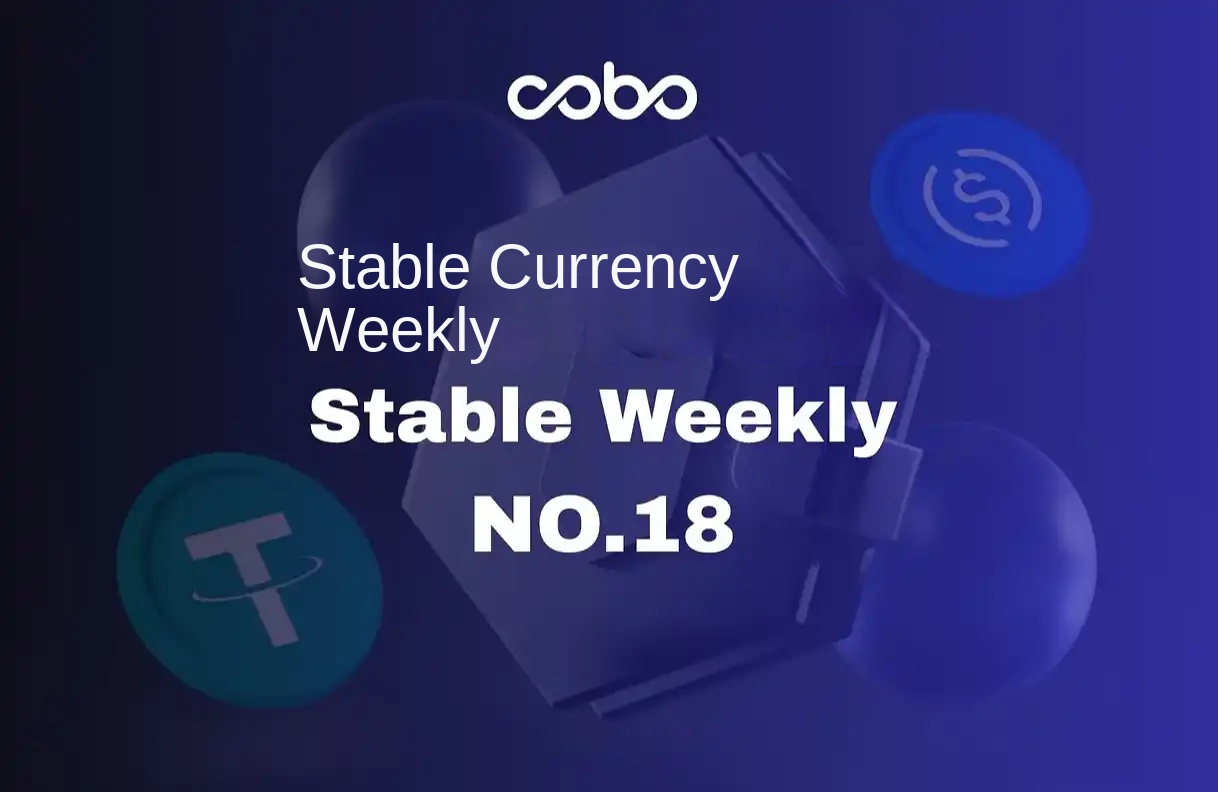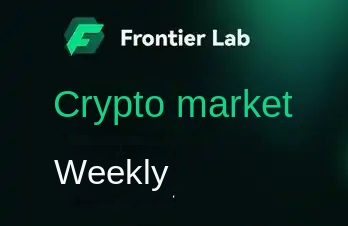Project Crypto enters the stage: Who Will Emerge as the Biggest Winner of the US Blockchain New Order
On July 31, U.S. Securities and Exchange Commission (SEC) Chair Paul Atkins announced a groundbreaking new initiative — "Project Crypto." This SEC-led blockchain reform project has a clear goal: to completely redefine America's regulatory framework in the era of crypto assets, enabling the financial market to "move onto the chain" and achieve the grand vision outlined by the Trump administration — making the U.S. the "Crypto Capital of the World."
The old model of "enforcement-led regulation" not only led to innovative crypto companies leaving for Singapore and Dubai but also caused the U.S. to miss out on the opportunity to lead the next generation of financial infrastructure. The launch of "Project Crypto" is different from the tone of regulatory suppression seen in recent years and undoubtedly sends a strong signal to the entire industry: America's on-chain era starts now.
Regulatory Easing, Uniswap, Aave, and Other DeFi Protocols Enter a Golden Window
The attitudes of former SEC chairs toward crypto assets and their derivatives — especially DeFi (Decentralized Finance) — often determine the temperature and vibrancy of the U.S. market. During Gary Gensler's tenure, the SEC's regulatory strategy, centered on the "security definition first" and "enforcement-led" approach, emphasized bringing token trading fully into the traditional securities framework. During his term, over 125 crypto-related enforcement actions were taken, involving numerous DeFi projects, including a summons to Uniswap and a lawsuit against Coinbase, almost raising the compliance threshold for on-chain products to historic levels.

However, a fundamental shift in SEC's regulatory style occurred when Chairman Paul Atkins took office in April 2025. He quickly initiated a thematic roundtable titled "DeFi and the American Spirit" to loosen DeFi regulation.
In Project Crypto, Atkins clearly stated that the original intention of U.S. federal securities laws was to protect investors and market fairness, not to restrain technology architectures that operate without intermediaries. He believes that decentralized financial systems such as Automated Market Makers (AMMs) can fundamentally achieve non-intermediated financial market activities and should receive institutional recognition. Developers who are "just coding" should be offered clear protection and exemptions, while intermediaries wishing to provide services based on these protocols should follow a clear and enforceable compliance path.
This shift in policy direction undoubtedly sends a positive signal to the entire DeFi ecosystem. Especially protocols like Lido, Uniswap, Aave, which have already formed on-chain network effects and possess highly autonomous designs, will gain institutional recognition and development space under a non-intermediary regulatory framework. Protocol tokens that have long been plagued by the "security shadow" also have the opportunity to reshape their valuation logic in the context of relaxed policies and market re-engagement, becoming once again "mainstream assets" in the eyes of investors.
Building the Next-Generation Financial Gateway: The Super-App Will Reshape the Competitive Landscape of Trading Platforms
In his speech, Paul Atkins put forward the idea of a "Super-App," which is the most realistic and transformative concept. Atkins believes that current securities intermediaries, while providing traditional securities, crypto assets, and on-chain services, face complex compliance structures and redundant licensing barriers. This directly impedes product innovation and user experience enhancement. He proposes that future trading platforms should be able to integrate various services under one license, including non-security crypto assets (such as $DOGE), security tokenized assets (such as tokenized stocks), traditional securities (such as US stocks), as well as services like staking, lending, and more. This is not only a compliance innovation that simplifies processes but also the core of future trading platform companies' competitiveness.
Regulators will drive the real implementation of this Super-App architecture. Atkins has made it clear that the SEC will draft a regulatory framework allowing crypto assets, whether or not they constitute securities, to coexist on SEC-registered platforms. At the same time, the SEC is also evaluating how to use existing authority to relax listing conditions for some assets on non-registered exchanges (such as platforms with only state licenses). Even derivatives platforms regulated by the CFTC are expected to incorporate some leverage functions to unlock greater trading liquidity. The direction of the entire regulatory reform is to break the binary boundary between securities and non-securities, allowing platforms to flexibly configure assets based on the nature of the product and user needs, rather than being hijacked by compliance structures.
The most direct beneficiaries of this transformation are undoubtedly Coinbase and Robinhood. These two companies have long established a diversified trading structure, covering mainstream crypto assets, operating traditional securities trading, and providing lending and wallet services. Encouraged by Project Crypto, they are likely to be the first platforms to benefit from policy dividends—achieving one-stop services and connecting on-chain products with traditional user bases. It is worth noting that Robinhood has completed the acquisition of Bitstamp earlier this year and officially launched tokenized equity trading, bringing stocks like Apple, NVIDIA, and Tesla onto the blockchain in ERC-20 format. This move is a prelude to the Super-App model: providing a traditional stock trading experience using on-chain protocols without disrupting the familiar user experience.

On the Coinbase side, by advancing the development ecosystem through the Base Chain, they are attempting to integrate the exchange, wallet, social, and application layer services. If they can integrate traditional securities with on-chain assets at the compliance layer in the future, Coinbase is highly likely to evolve into the "Blockchain Version of JPMorgan Chase" or the "Next-Generation Morgan Stanley"—not only an asset gateway but also a complete financial tool distribution and operation platform.

It is foreseeable that once the Super-App architecture is fully unleashed, it will become the core battlefield of transaction platform competition. Whoever can first achieve compliant "multi-asset aggregation trading" will take a leading position in the next round of financial infrastructure upgrades. The regulatory attitude has become increasingly clear, and platforms have already accelerated their entry. For users, this means a smoother trading experience, a more diverse product selection, and a financial world closer to the future.
ERC-3643: From a Technical Protocol to a Policy Template, the Compliance Bridge for the RWA Track
On the RWA front, Paul Atkins clearly stated in his speech that he will drive the tokenization of traditional assets and specifically mentioned ERC-3643 as a token standard worth referencing in the regulatory framework. This was the only token standard publicly mentioned throughout the entire speech, indicating that ERC-3643 has risen from a technical protocol to a policy-level reference model, underscoring its importance.
Paul emphasized that when designing an innovative exemption framework, the SEC will prioritize token systems with "built-in compliance capabilities." The ERC-3643 smart contract integrates mechanisms such as permission control, identity verification, and transaction restrictions, directly meeting current securities regulations' requirements for KYC, AML, and accredited investors.
One of the significant features of ERC-3643 is its "compliance-as-code" design philosophy. It includes a decentralized identity framework called ONCHAINID, where all token holders must undergo identity verification and meet preset rules before completing holding or transfer operations. Regardless of which public chain the token is deployed on, only users who meet KYC or accredited investor criteria can truly own these assets. The smart contract layer handles compliance judgments, no longer relying on centralized audits, manual records, or off-chain protocols.

This is in stark contrast to ERC-20, with the primary difference being the introduction of "permissions." ERC-20 emerged in a fully open, permissionless on-chain native context, where any wallet address could freely send and receive, making it a "fungible tool." In contrast, ERC-3643 targets high-value, heavily regulated asset categories such as securities, funds, and bonds, emphasizing "who can hold" and "compliance." It is a "permissioned token standard." In other words, ERC-20 is the free currency of the crypto world, while ERC-3643 is the compliant container of on-chain finance.

Currently, ERC-3643 has been adopted by financial institutions in multiple countries worldwide. The European digital securities platform Tokeny has been expanding the ERC-3643 standard into the private market securities tokenization. In June of this year, Tokeny announced a partnership with the digital securities platform Kerdo to build a blockchain-based private investment infrastructure using ERC-3643, covering asset types such as real estate, private equity, hedge funds, and private debt.

From real estate to art collections, from private equity to supply chain invoices, ERC-3643 provides the underlying support for the fractionalization, digitization, and global circulation of various assets. It is currently the only public chain token standard that combines programmable compliance, on-chain identity verification, cross-border legal compatibility, and integration with existing financial infrastructure.
As mentioned by Paul Atkins in his speech, the future securities market not only needs to "run on-chain" but also needs to "comply on-chain." In this new era, ERC-3643 may become a key bridge connecting the SEC with Ethereum and linking TradFi with DeFi.
Entrepreneur Repatriation to the U.S., Primary Market Set to Rejuvenate on the Blockchain
For a long time, the Howey Test has been the primary basis for the U.S. Securities and Exchange Commission (SEC) to determine whether an asset constitutes a security. Specifically, it consists of four elements: investment of money, in a common enterprise, with an expectation of profits primarily from the efforts of others. If a project meets these four criteria, it will be deemed a security, thus subject to a series of securities law frameworks including pre-sale prospectuses, disclosure of information, and regulatory filings.

It is precisely due to the vague nature of this test and inconsistent enforcement that many projects have chosen to sacrifice the U.S. market in recent years to avoid potential regulatory risks, even deliberately "blocking" U.S. users and refraining from airdrops and incentives.
In the recently released Project Crypto Policy, SEC Chairman Paul Atkins explicitly proposed for the first time: to establish a reclassification standard for crypto assets to provide clear disclosure requirements, exemption conditions, and safe harbor mechanisms for common on-chain economic activities like airdrops, ICOs, and staking. The SEC will no longer default to "issuance = security" but will reasonably categorize assets into different classes such as digital commodities (like Bitcoin), digital collectibles (like NFTs), stablecoins, or security tokens based on the economic attributes of the asset and provide suitable legal pathways.
This represents a key turning point: project teams will no longer need to “pretend not to issue tokens,” nor will they need to use roundabout structures such as foundations or DAOs to conceal incentive mechanisms, nor will they need to register the project in the Cayman Islands. Instead, they will truly focus on code, with a team driven by technology at its core, and will receive institutional affirmation.
At a time when emerging tracks such as AI, DePIN, and SocialFi are rapidly rising and the market is experiencing a surge in early-stage funding demand, this regulatory framework based on substance classification and innovation encouragement is expected to spark a wave of projects flowing back to the United States. The United States is no longer a market that crypto entrepreneurs circumvent but may once again become their first choice for issuing tokens and fundraising.
Summary
“Project Crypto” is not a single bill but rather a comprehensive set of systematic reforms. It depicts a future where decentralized software, tokenomics, and capital market compliance are integrated. Paul Atkins' stance is also very clear: “Regulation should no longer stifle innovation but make way for it.”
For the market, this is also a clear policy shift signal. From DeFi to RWA, from Super Apps to token issuance fundraising, the ability to take off in this policy dividend round depends on who can first respond to this U.S.-led “on-chain capital market revolution.”
Welcome to join the official BlockBeats community:
Telegram Subscription Group: https://t.me/theblockbeats
Telegram Discussion Group: https://t.me/BlockBeats_App
Official Twitter Account: https://twitter.com/BlockBeatsAsia
 Forum
Forum OPRR
OPRR Finance
Finance
 Specials
Specials
 On-chain Eco
On-chain Eco
 Entry
Entry
 Podcasts
Podcasts
 Activities
Activities









